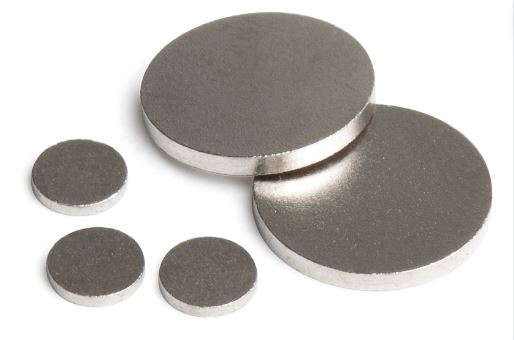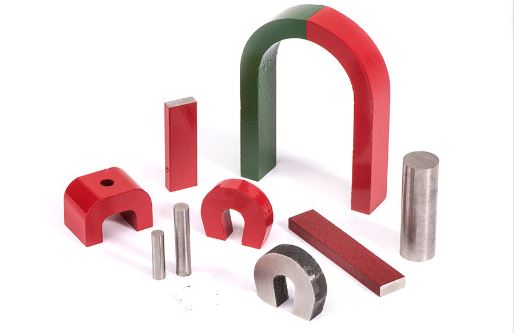Among the most popular metals you will find in most industrial applications is cobalt. It is mainly attributed to the unique magnetic properties, which we will discuss in this article.
Is Cobalt Magnetic?
Cobalt is indeed a magnetic material. It is a ferromagnetic metal, that is capable of attracting strong magnets and getting magnetized. This is likely due to the unpaired electrons in its outer shell which point in the same direction due to the fact that they undergo spin and hence form a magnetic material.
What Makes Cobalt Magnetic?
Cobalt’s magnetism is attributed to the structure of its constituent atoms. Electrons of cobalt atoms remain unpaired, the order of these at the atomic level, causes their alignment and magnetic field creation. This exchange of electrons is attributed to cobalt getting magnetized when in a magnetic field.

Factors Affecting Cobalt Magnetism
- Temperature: Temperature has a huge impact on cobalt’s magnetic properties. The behavior of cobalt in terms of magnetic properties can be affected by changes in temperature. In case of high temperatures, cobalt loses the magnetism and becomes magnetic less. This also means that cold cobalt is normally considered stronger in its magnetic power.
- Purity: The purity grade of cobalt may affect its magnetism. Cobalt of higher purity in comparison to impurities exhibits correspondingly more magnetism while the magnetism in alloyed states is reduced.
- Crystalline Structure: In terms of the magnetic behavior of cobalt, its crystalline structure matters. Magnetic properties can be modulated via variations in crystal structure that may yield different magnetic strengths.
- External Magnetic Fields: The external magnetic field of a certain intensity can be the source of cobalt magnetism. The presence of cobalt in the solid may render it magnetized or demagnetized as a function of the strength and direction of the external field.
- Alloying Elements: Cobalt is a metal that in combination with other metals, like iron or nickel, can have altered magnetic properties. Alloying agents affect not only the magnetic force of the cobalt but also its behavior in a magnetic field.
Cobalt vs Ferromagnetism
Cobalt, a metal with ferromagnetic characteristics, has inherent magnetic properties because of the electrons being unpaired and aligning in parallel within its atomic structure.
The alignment of cobalt spins produces spontaneous or intrinsic magnetization and magnetic domains, which enable cobalt to retain its magnetism even when free of an external magnetic field.
Its behavior of ferromagnetism sets cobalt as a vital participant in applications such as magnetic storage devices, magnetic alloys as well as electric motors.
The knowledge of cobalt’s specific ferromagnetic properties is a basis for unlocking potential applications of magnetic features in different branches of industry and technology.
Cobalt Curie Temperature
The Curie temperature of cobalt, also referred to as Curie point, is approximately 1,115 °C (2,039 °F). In temperatures less than the Curie point, cobalt becomes ferromagnetic and is able to magnetize and keep it even after removing an external magnetic field.

On the other hand, cobalt turns paramagnetic once above critical Curie temperature and thus stops showing spontaneous magnetization. Knowing the Curie temperature of cobalt is critical for numerous applications where its magnetic properties are vital, like magnetic storage media and magnetic alloys.
Cobalt Magnetic Permeability
Cobalt’s magnetic permeability means its capacity to form magnetic fields inside it once it is subjected to an external magnetic field. The magnetic permeability of cobalt is about higher than that of non-magnetic materials but also much lower than iron or nickel. Cobalt’s magnetic susceptibility relies on a bunch of factors like the type of impurity, temperature, and crystal structure.
In the majority of cases, cobalt is magnetically permeable, over 1 in its high value, so it is capable of increasing the magnetic fields. This feature, in particular, makes cobalt desirable in magnetic alloys and electronics applications where the control of the magnetic properties is essential.
Understanding Magnetic Moment of Cobalt
Cobalt’s magnetic moment represents the natural magnet property of cobalt atoms originating from the parallel alignment of the spins of unpaired electrons in the atom. Cobalt’s magnetic moment is a function of the total spin and orbital angular momentum of its electrons.
Cobalt, having unpaired electrons, can create a local atomic magnetic moment. Every unpaired electron directly contributes to the overall magnetic moment of the atom and therefore to the creation of the net magnetic field by the cobalt atom.
The effect of cobalt magnetic on moment can be modulated by different factors including temperature, crystal structure, and the presence of external magnetic fields. At room temperature cobalt demonstrates ferromagnetism, a behavior where neighboring moments together are oriented in one direction, thereby forming magnetic domains.
Knowledge of cobalt magnetic moment is essential for clarification of cobalt magnetic properties, as well as its response in magnetic materials and devices. It is essential in setting pricing with regard to the application of cobalt which includes magnetic storage media, magnetic alloys, and magnetic sensors.
How to Permanently Magnetic Cobalt
To permanently magnetize cobalt, you can follow these steps:
- Choose High-Quality Cobalt: Start with a nearly perfect level of the cobalt material to purify to a certain extent, as impurities may influence the magnetic force.
- Prepare the Surface: Clean the cobalt surface thoroughly and try to remove any contamination. Use a solvent and abrade it, with the gentleness as needed.
- Apply a Strong Magnetic Field: Magnetize the cobalt with a dominant magnetic field. This can be accomplished using a strong electromagnet or permanent magnet making it graciously. Remember to set the cobalt to be parallel to the direction of the magnetic field lines.
- Heat Treatment (Optional): Raise the cobalt temperature to a level that is higher than the Curie point while in the field of a magnet. It fixes the misalignment of magnetic domains and results in higher retained magnetization. Slowing down the cooling of cobalt thereafter prevents the fluctuations in the direction of magnetization.
- Cooling: Let the cobalt remain in the magnetic field while still being cool. It leads to the stability of magnetic domains that are made by bringing the magnetic products to parallel orientation.
- Remove from Magnetic Field: When finally done, slowly remove the cobalt from the magnetic space. Therefore, now it should carry the magnetization forever and be able to produce its own magnetic field.
Applications of Cobalt
- Magnetic Alloys: Cobalt’s resilience in making alloys for these magnets in electric motors and generators makes them entirely better.
- Magnetic Recording: Cobalt facilitates high-density data record in magnetic recording media like hard drives through its shape memory effect.
- Medical Devices: Cobalt magnets form the basis of the MRI machines for medical imaging and diagnostics. The latter uses.
- Automotive Sensors: Cobalt magnets are necessary to make sensors for automotive apps like speedometers and Antilock Brake System (ABS).
- Electronics: Cobalt magnet is an important constituent in almost all electronic gadgets like microphones, speakers, and headphones.
Does Cobalt Make Strong Magnets?
Yes, cobalt does make powerful magnets. Cobalt-based magnetic substances such as alnico and samarium cobalt (SmCo) are highly reputable for their stability and higher magnetic density.
These sets of magnets, i.e., neodymium magnets are widely used commodity products in various applications.
This is where large and robust magnets are required like for example electric generators and motors, and MRI machines. Cobalt, although it cannot attain a magnetic strength equal to neodymium, is still a strong magnet and is the most important element in various technological and industrial applications.

Can Cobalt Become a Strong Magnet?
Yes, cobalt is likely to become a very powerful magnet. If cobalt is magnetized correctly, it can be seen to have notable magnetic properties primarily in ferromagnetic conditions. When cobalt is subjected to a high external magnetic field and a precisely regulated magnetization process, the domain structure in the material is aligned, thereby creating a strong and permanent magnet.
Cobalt magnets have found widespread use in many areas where strong magnetic fields are vital, for instance, in automotive, aeronautical, and electronic equipment.
Conclusion
Finally, cobalt’s unique features of intrinsic magnetism and the capability for magnetizability are what make it the material of choice for a wide array of applications such as electric motors and magnetic recording media as well as medical devices.




